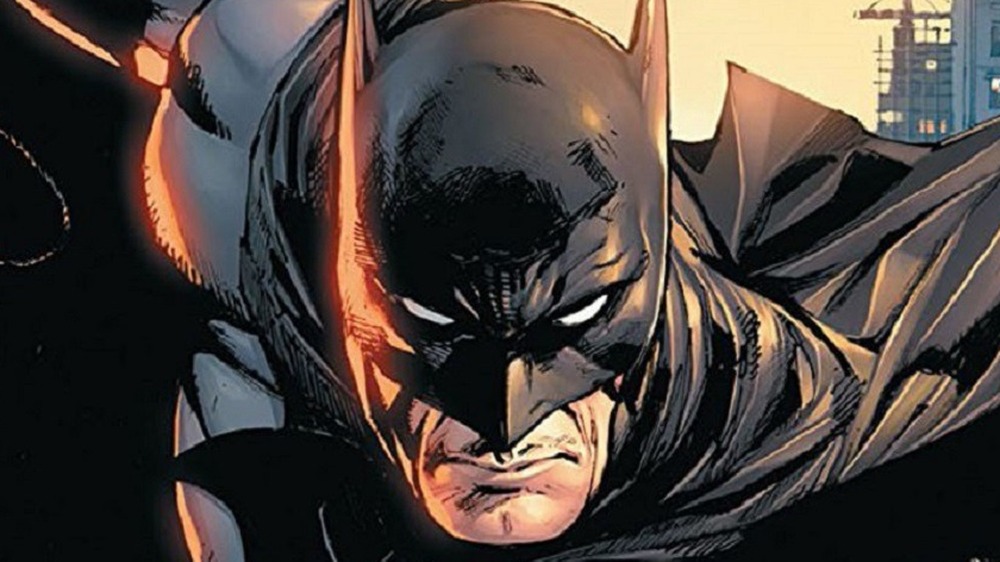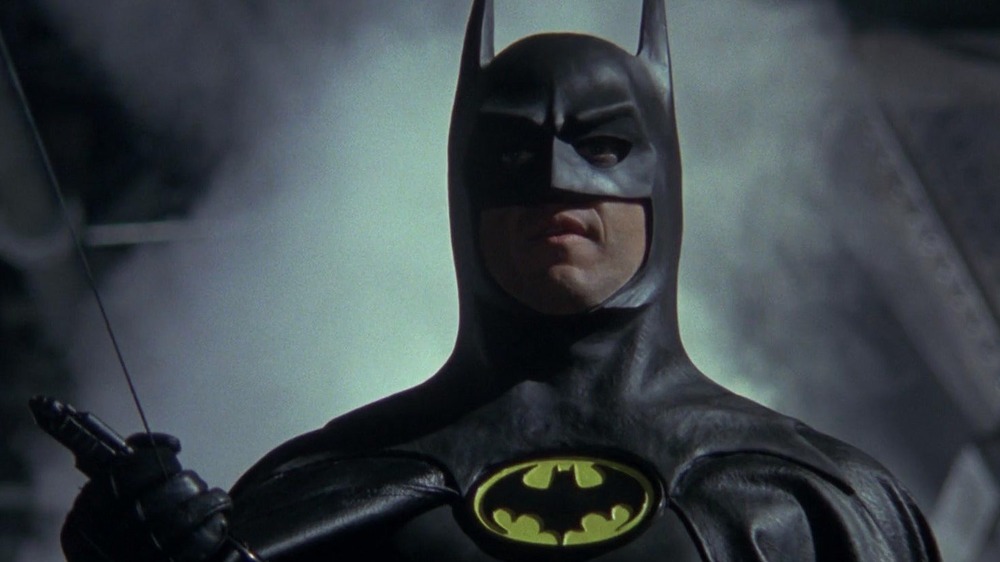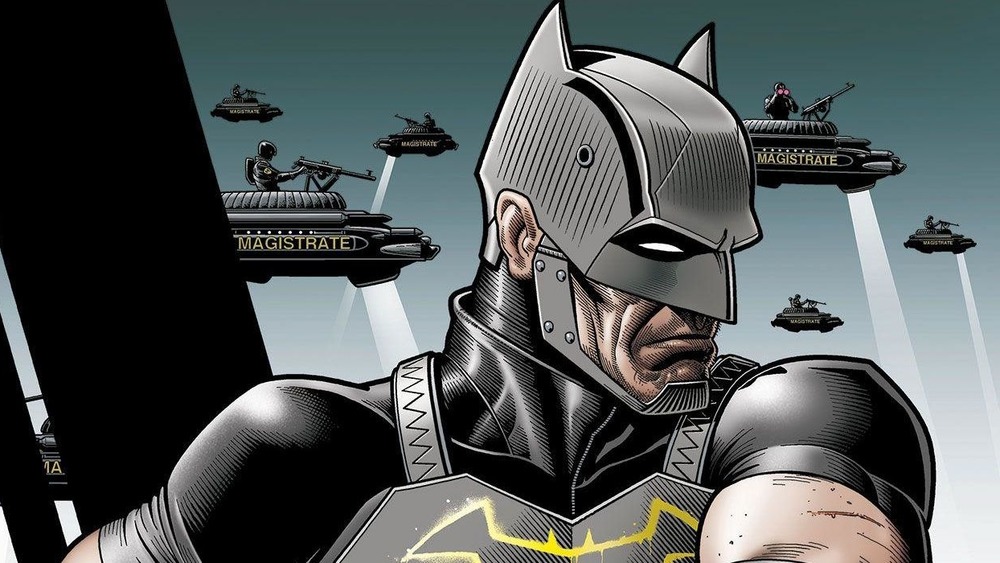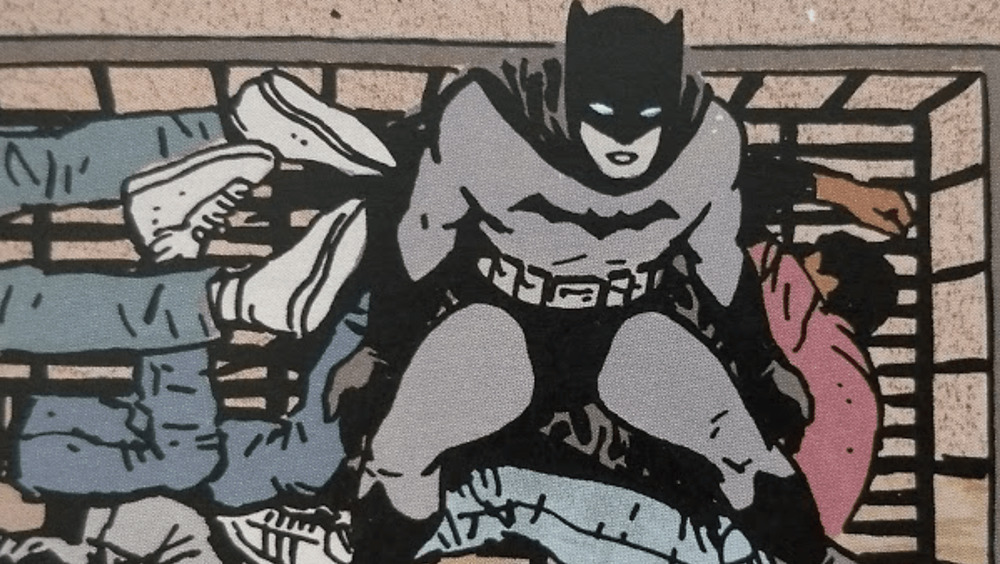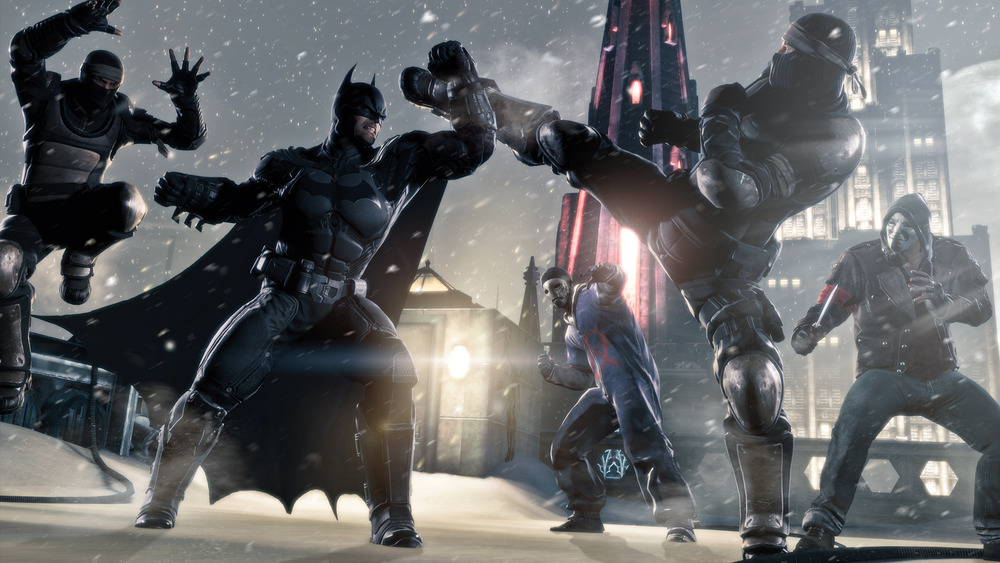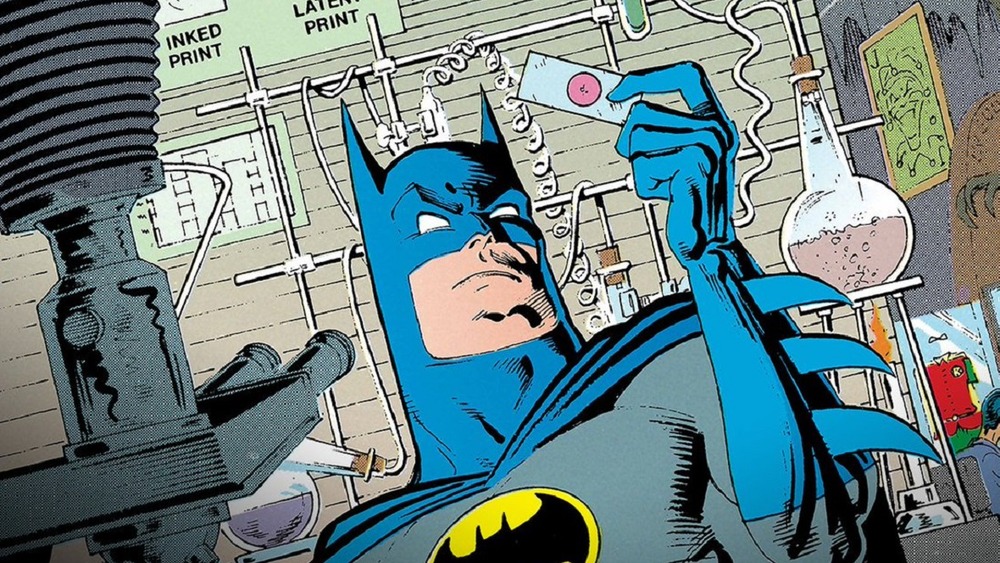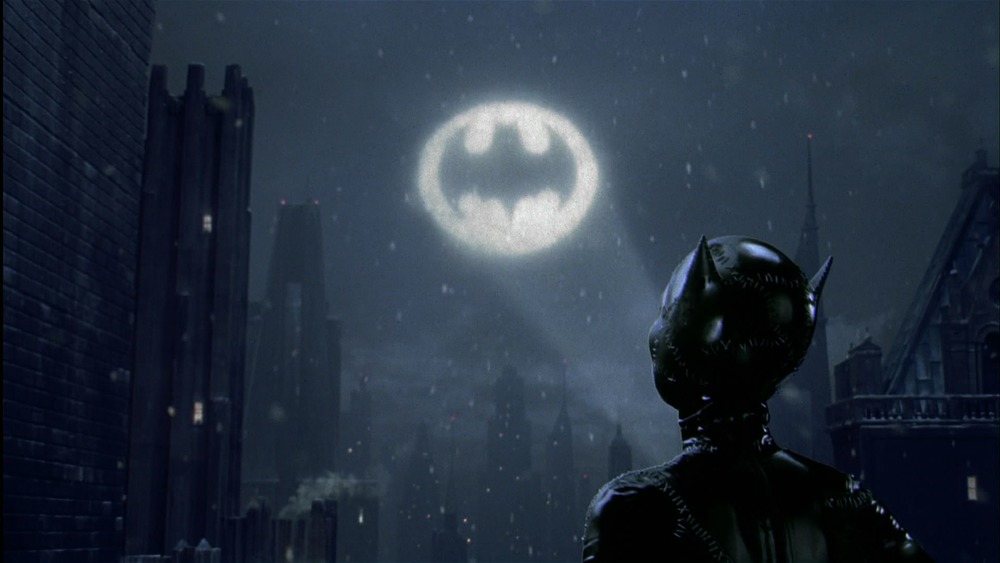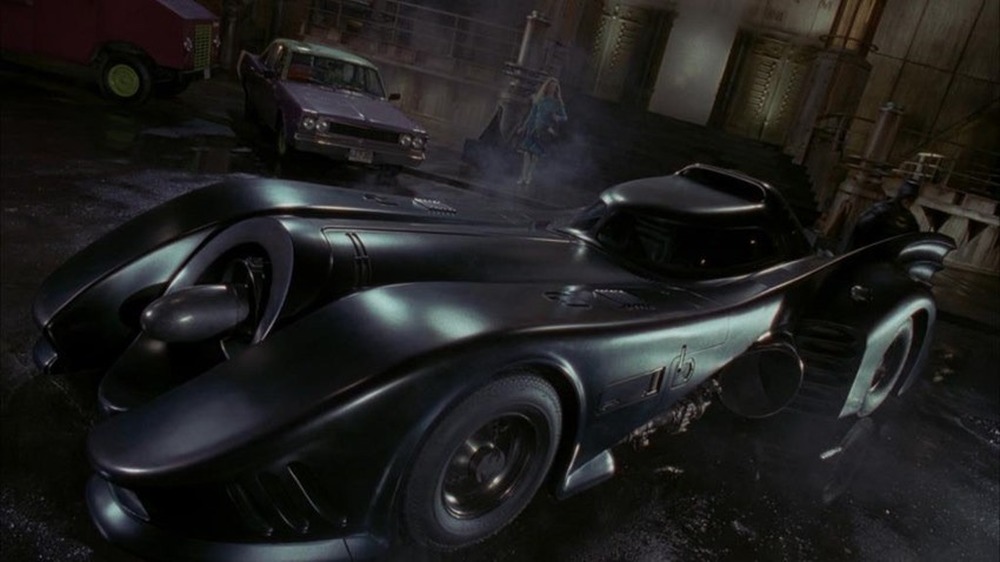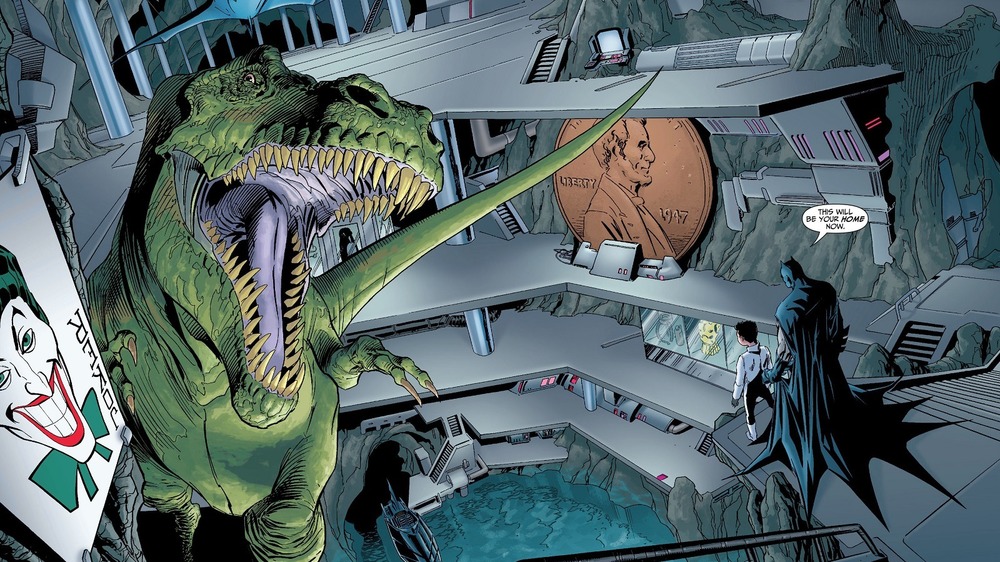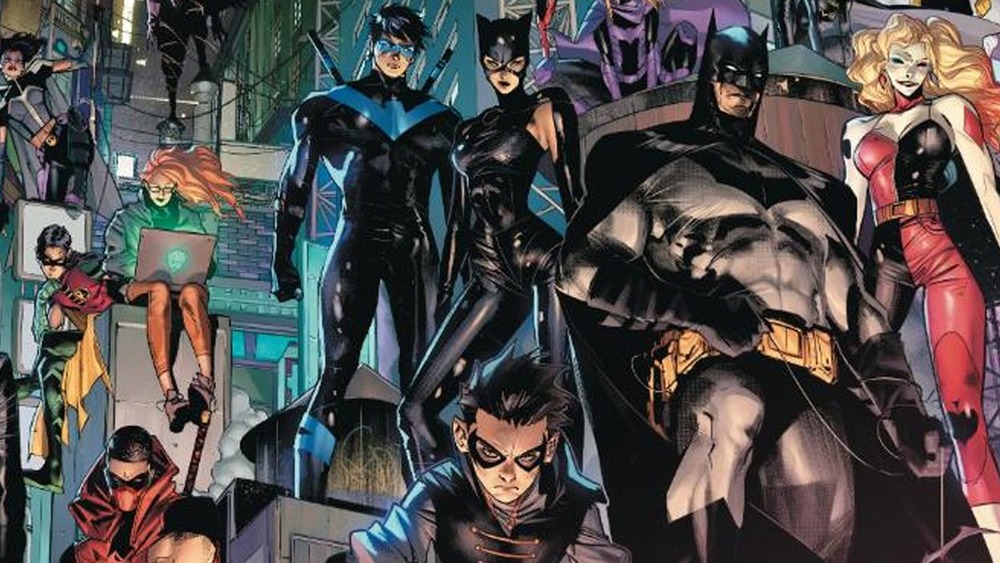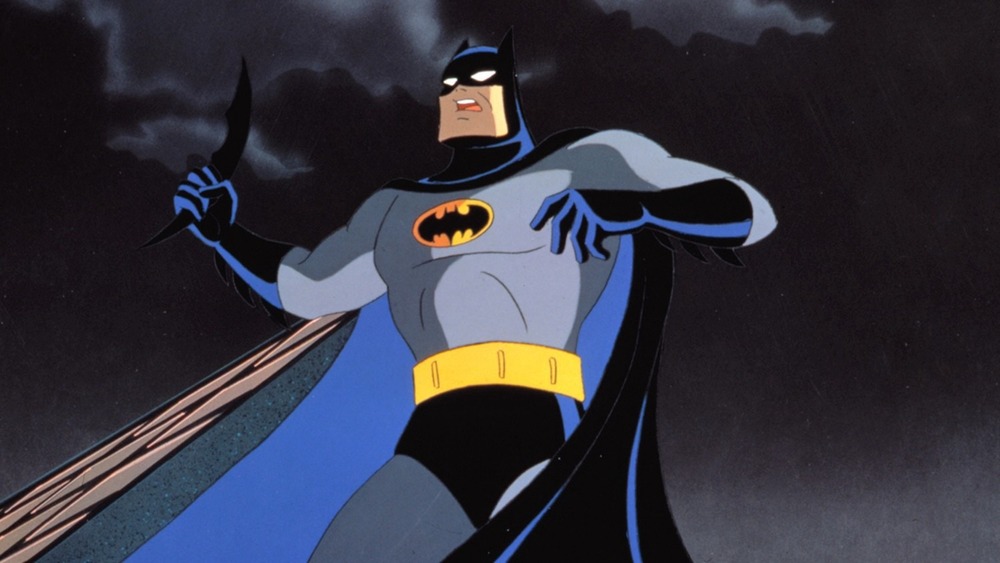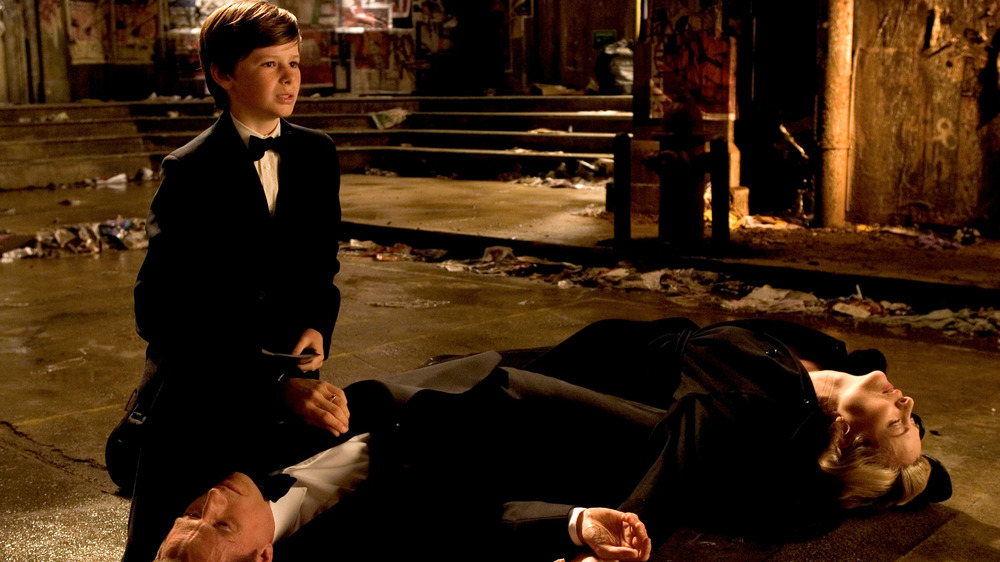Rules Batman Has To Always Follow
Virtually infinite versions of Batman have appeared in countless comics, movies, video games, and TV shows. After all, the superhero has been around since 1939, so there's been plenty of time for DC and its corporate affiliates to make a lot of Batman stuff. And with all this Bat-merch, that means we've gotten some pretty wild takes on the Caped Crusader over the years.
For example, we've had the kill-crazy Batfleck in Zack Snyder's films, Adam West's wholesome 1960s version, and Frank Miller's grimdark Batman from the '80s. There's even George Clooney's credit card-wielding hero. But despite their differences, there are certain elements that bind all the Batmen together. Whether he shows up on the page or the big screen, whether he's an upbeat do-gooder or a nihilistic punisher, the Dark Knight always follows certain unspoken codes. But what are they? Well, from costume elements to tragic deaths, here are all rules that Batman always has to follow.
Batman needs an insignia on his chest
It's hard to pinpoint exactly when, but at some point during the last 80 years or thereabouts, an outline vaguely resembling the planet Earth's only flying mammal — flying squirrels are technically more like gliding squirrels, you see — became more closely associated with a DC superhero franchise than, ah, well, actual bats.
The basic elements of the Batman costume are essential to his identity in ways that don't necessarily apply to other fictional characters. For instance, Hugh Jackman plays Wolverine in multiple X-Men movies and doesn't wear his pointy mask once, and that works just fine because as long as we see Wolverine's claws, we know he's Wolverine. Additionally, attitude and mannerisms define James Bond more than any specific visual cues. But Batman needs his Batsuit, and without a big bat insignia on his chest, we wouldn't be sure if he was him or Daredevil in a black outfit and a cape, and that would leave everyone involved horribly embarrassed.
While a big bat outline is closely associated with the superhero persona often occupied by Bruce Wayne, it's not exactly the most original or distinct element of Batman's aesthetic. History tells us that Batman was created in an attempt to follow up on the success of Superman, who debuted with the now-iconic "S" on his chest about a year earlier.
He must have pointy ears
Capes are sure handy for in-combat diversionary tactics. And if you stand atop a building on a windy night in Gotham, a cape across your shoulders looks totally badass billowing in the wind. For these reasons and more, Batman wears a cape most of the time ... but not always. Terry McGinnis doesn't wear a cape, and the Future State version of Bruce Wayne doesn't have one, either. But even if they're not sporting a cloak while fighting crime, all Batmen must wear a mask with little, pointy, decorative ears.
Batman's ears have become a staple of the hero's presentation, and they seemingly went on to influence a handful of other superfolk. Catwoman, Catman, Daredevil, and Black Panther all wear costumes that include similar pointy ears. And just like Batman, none of their faux ocular devices serve any functional purpose whatsoever.
Instead, pointy ears just look intimidating and awesome, and unlike capes, they present no danger of potentially distracting the wearer or tangling someone up in the middle of a battle. As far as we know, Dollar Bill of Watchmen fame is the only DC superhero who ever perished due to a cape-related mishap, which seems downright miraculous. And he didn't have pointy ears, so he probably looked pretty lame when he died.
Batman can't have superpowers
Batman routinely demonstrates impossible competency, incredible combat techniques, and unmatched talent for deduction and reasoning. An argument could be made that simply being Batman — which comes part in parcel with an awe-inducing presence and reputation — is a type of superpower.
But when it comes to abilities of a supernatural nature or the capacity to defy the laws of physics, Batman comes up short every time. He doesn't even have scientifically enhanced athletic prowess like Steve Rogers. Batman's fitness is the exclusive result of hours upon hours sweating and toiling away in the Bat-gym.
Whenever Batman appears as the protagonist of a story, his literal humanity becomes essential because it's just about the only thing about him that a normal person can relate to. After all, there are plenty of dumb rich kids in the world, but hardly any of their parents were ever shot in front of them. And of the few who did witness their mom and dad's violent demise, none of them wage war on superstitious and cowardly criminals. They just develop nasty substance abuse problems and hopefully go to therapy a few times a week.
Even without the ability to shoot lasers out of his eyes or fly or throw trucks or what have you, Bruce Wayne is already an implausible individual and giving him crazy powers would just exacerbate the situation. In many ways, an omnipotent space alien who decides to help people because he feels like it is much more realistic.
Hand-to-hand combat chops are a must
From the unmistakable "BAM!" "POW!" "ZAP!" effects of the campy 1960s program to Robert Pattinson repeatedly throttling a street thug and introducing himself as "Vengeance," Batman's always been a punchy kinda guy.
There are a few good reasons for this. Even though fighting isn't usually fun and you can get very badly injured doing it in real life, imaginary combat exhilarates like almost nothing else. So any writer who needs to inject some excitement into their Batman story simply needs to provide Gotham's Guardian with a face to punch, a stomach to kick, or a limb to snap, and voila — instant entertainment.
From Batman's in-story perspective, criminals might not find him so intimidating if they knew they stood a chance against him in a fistfight. So his reputation as a master of several martial arts disciplines makes it easier to intimidate potential foes, and it allows him to solve the majority of his problems with a flurry of well-placed knocks to a skull or ten.
Some of his adversaries might be too powerful to beat up, others might be smart enough to avoid a punching contest with Batman, and a handful are immune or indifferent to physical pain. But for your typical everyday purse snatcher-type, a haymaker wrapped in a Bat-glove does the trick and then some.
Detective skills are essential to being Batman
They don't call him the World's Greatest Detective because he makes a killer grilled cheese and tomato sandwich. Bruce Wayne has never prepared a meal for himself or anyone else in his life. Instead, they call him the World's Greatest Detective because he's excellent at solving mysteries.
When Bruce Wayne devoted himself to warring against crime, he spent the following years honing his fighting prowess to virtually unmatched levels and developing a forensic and scientific mind like few others. Particularly when dealing with adversaries in the vein of the Riddler and the Joker, he's gotta have the smarts to decipher the clues they deliberately leave lying around to make their crime sprees more interesting. He also encounters many criminals who don't care if they're interesting and just want to avoid getting caught, so Batman's powers of detection come in very handy for hunting them, as well.
Not every version of Batman has the deduction skills or access to lab equipment that the billionaire Wayne enjoys. But they all must keep their perception sharp and their thinking sophisticated for when they inevitably run into a dilemma they can't punch and kick their way through.
He must live in Gotham City
In the Marvel Universe, superheroes live in fictionalized versions of real cities like New York and San Francisco. In the DC Universe, sometimes the action takes place in or around real-world locations, but most stories occur in made-up municipalities like Star City, Metropolis, and Gotham. These burgs play host to a wide variety of crimefighting characters, but while other heroes tend to bounce around, Batman always resides in Gotham.
Films often copy and paste multiple urban locations into an amalgam they can use as Gotham. Parts of New York, London, Tokyo, Chicago, and numerous other towns stand in for the city in various Batman movies. So while Gotham looks very distinctive in specific renderings — Batman: The Animated Series and the Tim Burton films both dial up the "goth" portion of Gotham's sobriquet, for instance — we can think of it more like a fictionalized version of every American city in the Midwest and the Northeast. It doesn't have the entertainment industry centralization of Los Angeles, and it's not as weird in the fun way as somewhere like Austin, Texas. It seems like the kinda a place a feller could open a costume store and do alright, though. And it's most definitely Batman's permanent base, as this local boy would never leave his hometown behind.
He needs a Batmobile of some sort
Batman stories come about because international corporate monoliths will them into existence, and those corporate monoliths love characters and objects they can mass-produce and sell in toy stores. Certainly, this partly explains why Batman always drives a customized car or other vehicle with a Bat-prefix attached, but let's not get too wrapped up in cynicism. After all, the Batmobile first appeared in 1939, decades before Batman action figures and accessories became a thing. Unlike Superman, Batman can't fly, and he's got to get from place to place somehow.
But the Batmobile can take many forms. The wheeled monstrosity from Batman Begins marks a departure from the sleek, stylish vehicle on display in Tim Burton's Batman and Batman Returns, which in turn looks far less hokey but also less practical than the Batmobile Adam West drives in the '60s TV show.
Oddly enough, the Batmobile appears to update and change with the times to an extent that Batman doesn't need to. Batman might stop being Bruce Wayne, or we might see his adventures take place in a different historical era, but his entire appearance and functional purpose doesn't get completely overhauled once every five real-world years.
He needs a Batcave or secret lair
Batman's definitely not a regular person, but he does have a few things in common with the rest of us. For one, he needs a place to keep his stuff. And if he parks the Batmobile out in the driveway of Wayne Manor or wherever his residence of-record happens to place him at the time, passers-by might put two and two together, and there goes the secret identity.
Traditionally, the Batcave makes a terrific garage and secret entrance, but it serves virtually limitless other purposes. The Batcave is also a crime lab, a training gym, a top-of-the-line medical facility, a supercomputer, a costume-design studio, and an unofficial trophy room showcasing keepsakes from Batman's favorite adventures. And occasionally, it includes an obstacle course with faux-opponents, similar to the early version of the Danger Room at Xavier's School for Gifted Youngsters.
The Batcave also provides a natural habitat for actual bats. Some people think of bats as noisy, smelly winged vermin. Others seem to consider bats the most frightening things imaginable. And some find them to be adorable, furry critters who love grapes and watermelon bits as a treat. But most of us agree that their sporadic screeches add an ambiance of elemental menace that's essential for any proper Batcave.
Batman always has allies
If he's keeping it local in Gotham City, Bruce Wayne's allies could include any number of individuals formerly or currently known as Robin, multiple crimefighters currently or formerly known as Batgirl, Catwoman, a few members of the Gotham City Police Department, Lucius Fox, a handful of Fox's immediate family members, and of course, Bruce Wayne's longtime butler, Alfred Pennyworth. And if a mission requires a trip abroad or off-planet, he has the rest of the Justice League to call upon for assistance, should he need it.
Meanwhile, Terry McGinnis' primary running buddy in his future version of Gotham happens to be Bruce Wayne. Even the Batman Who Laughs has a bunch of creepy vampire-type creatures in Robin outfits on leashes.
Sure, in theory, Batman works alone, most likely so he can tell people, "I work alone!" and, "People who get close to me get hurt!" After all, that stuff makes him sound dangerous, which is exciting for those of us in the audience. But in practice, the Batman works with a big ol' heap of pals. To some extent, this is true of every major superhero, but it's doubly important for Batman to have a significant social support group. Without plenty of personal connections, he could turn into a lone psycho pretty quickly.
He's gotta have gadgets
Gadgets are totally badass and beyond useful, so it follows that Batman has plenty, and he carries his gadgets around in a fancy utility belt. These including Batarangs, bolas, a grappling hook, handcuffs, smoke bombs, antidotes for various poisons, a rebreather, a portable gas mask, lockpicks, a flashlight, and that's just the stuff he lets us know about.
Batman has no superpowers, but having a gizmo handy for virtually any situation that arises in the fight against the ne'er-do-wells of Gotham is almost like a superpower. However, Batman's range of gadgets really depends on the tone of the media he happens be appearing in at the moment. Family-friendly, lighthearted versions of Batman tend to load their utility belts up with unintuitive, occasionally downright silly accessories. One of the most memorable scenes from the entire 1960s Batman run features Adam West fending off a shark with, what else, shark repellent. But when it comes to more "realistic" spins on the Caped Crusader, they usually favor their grappling hooks and smoke bombs, and that's generally the extent of their gadgetry.
Occasionally, a Bat-branding iron finds its way into the mix, but to be honest, we expect to see the Bat-branding iron again about as much as we assume the shark repellent will reemerge as a primary element of Batman's aesthetic and crimefighting approach.
At least one of Batman's immediate family members has to die horribly
It could very well be that the deaths of Thomas and Martha Wayne have been performed on television and in films more than any other fictional characters not created and written by William Shakespeare. But there's more to the death of Bruce Wayne's parents than Hollywood's overreliance on established franchises. Batman requires a soul-annihilating trauma to kickstart his vendetta against crime. In some interpretations, his mission evolves into a war against suffering and death itself. Other times, he just winds up beating up muggers and serial killers, but either way, if nothing bad ever happens to Thomas and Martha, then Batman doesn't begin.
Bruce Wayne is an only child, but he's not the only Batman. Dick Grayson, Kate Kane, the Flashpoint universe's Thomas Wayne, Jean-Paul Valley, Damian Wayne, and Terry McGinnis all lost immediate family members due to acts of senseless, often random violence before becoming Bat-heroes. This calls into question some of our basic assumptions about Batman as an aspirational figure. It would seem that if all your loved ones are alive and well, then you can't be a real Batman. The closest you can come is putting on a costume and fighting crime, which isn't the same thing.
But in that case, why is being Batman so great? Isn't it better to be a weirdo dressed up as a bat whose family is all still alive? We sure think so.
